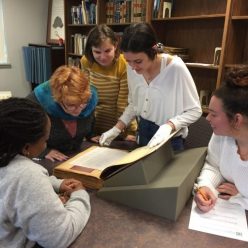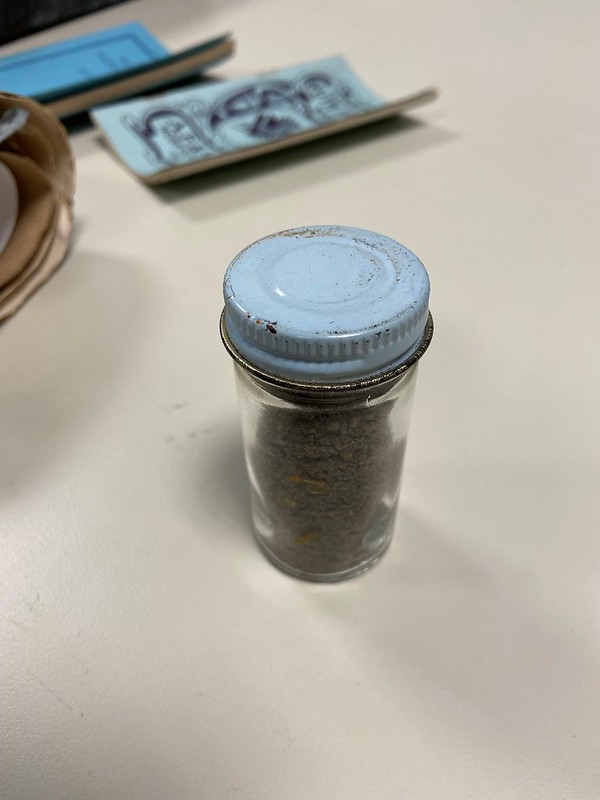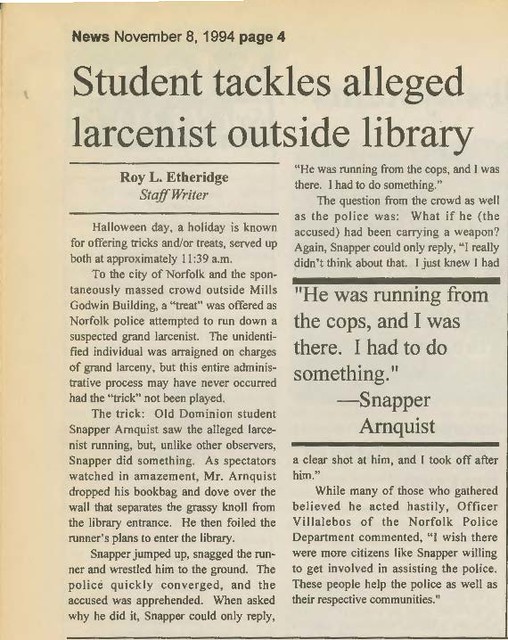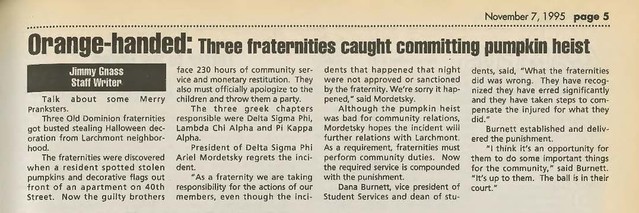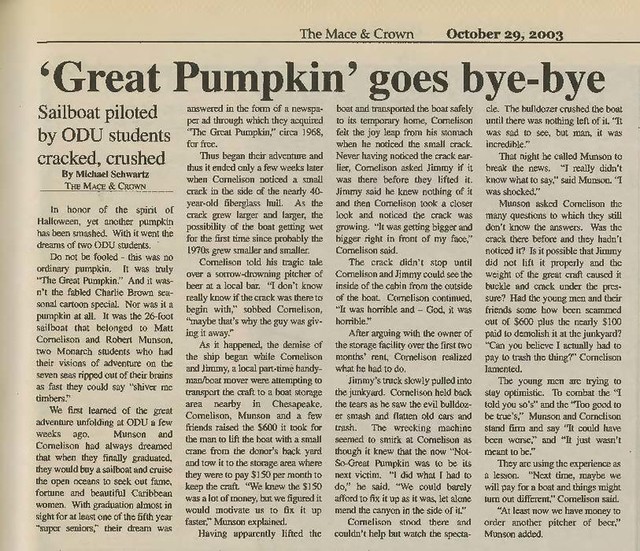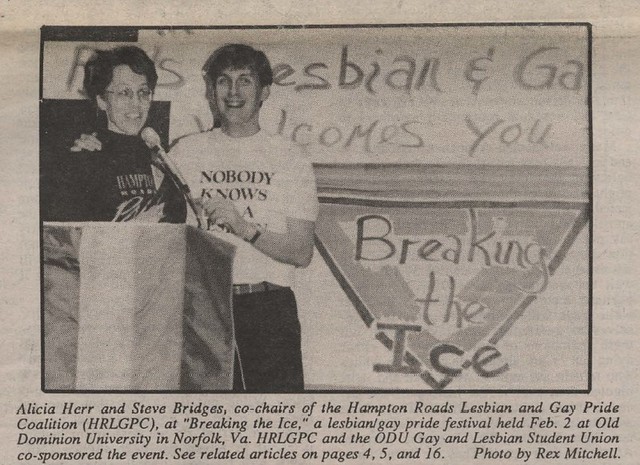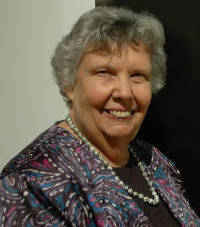by Kathleen Smith, Special Collections Metadata Specialist

Image Credit: Old Dominion University
While today marks the official founding of the Macon & Joan Brock Virginia Health Sciences at Old Dominion University, it’s development actually started two centuries ago. Here is a timeline of significant public health initiatives in Hampton Roads from 1819-2024:
1819– University of Virginia School of Medicine founded by Thomas Jefferson (third president of the United States) to offer an education in the “elements of medical science…with a history and explanation of all its successive theories from Hippocrates to the present day.”
1824– Six years later Jefferson felt there may be a need for a second medical school in Virginia. Jefferson wrote that Norfolk would be an ideal location for a second medical school which would be a branch of The College of William and Mary. Jefferson felt that Norfolk’s climate, “Pontine” country, and its destination as a port city would be “truly sickly in itself.” However, state leaders did not feel that way and had planned for the school to be based in Richmond.
1838– A second Virginia medical school formed in Richmond as the Medical Department of Hampden-Sydney College, only to become an independent institution known as the Medical College of Virginia in 1854. More than a century later in 1968, the Medical College of Virginia merges with the Richmond Professional Institute to become Virginia Commonwealth University. The college becomes known as the Virginia Commonwealth University School of Medicine.
1856– The Hospital of St. Vincent de Paul is founded in Downtown Norfolk during the yellow fever epidemic. DePaul was Norfolk’s first civilian and public hospital. The hospital is renamed DePaul hospital when a modern facility was built off of Granby Street in 1994. DePaul Hospital permanently closed in 2021.
1888– The “Retreat for the Sick,” a twenty-five-bed facility opens in Downtown Norfolk. Four years later, the facility starts Norfolk’s first nursing school. In 1898, the facility was renamed Norfolk Protestant Hospital and in 1903 it later moved to the Ghent/Atlantic City area of Norfolk (Raleigh Avenue). The hospital became Norfolk General Hospital in 1936. A modern facility is built in 1958. Over the years Norfolk General has expanded to provide extensive medical care, with it’s latest expansion completed in 2018.
1897– Portsmouth General hospital (originally named King’s Daughters Hospital Home for the Sick) is founded. The hospital expands over the years to keep up with medical advances. The hospital permanently closes in 1999.
1903– Sara Leigh Hospital, a twenty-eight-bed facility opens in the Ghent area of Norfolk. In 1936, the hospital is renamed Leigh Memorial Hospital and School of Practical Nursing opens in 1946. The hospital moves to its present-day location off of Kempsville Road in 1977.
1915– The Tidewater Colored Hospital Association is founded to provide medical care to Norfolk’s African-American community. The Tidewater Hospital (later renamed Drake Memorial Hospital) is built on donated land on 42nd Street near the Lamberts Point neighborhood. In 1939, a new upgraded facility was built on Corprew Avenue in the Brambleton Area and was renamed Norfolk Community Hospital. The hospital permanently closed in 1998.
1948– Virginia Beach General Hospital opens at 25th and Arctic Avenues near the Virginia Beach Oceanfront. The hospital moves to its present-day location off of First Colonial Road in 1965. Over the years two more hospitals open in Virginia Beach: Bayside in 1975 and Sentara Princess Anne Health Campus in 2006.
1958– A shortage of medical doctors is unable to meet the needs of a growing population in the Hampton Roads/Tidewater area. Since the end of the Second World War, the population has steadily grown due people from other regions moving to Hampton Roads, a “baby-boom,” and increase in life expectancy. During this time, the Hampton Roads area has the largest population center east of the Mississippi without a medical school and is struggling to keep up with growing medical advances. City leaders and area physicians feel that a formation of a regional medical school that would bring physicians outside the area as well as produce “homegrown” practitioners, would alleviate the problem. Civic leader Charles L. Kaufman stated that “Norfolk is the logical place. The need exists and the clinical facility will be more than adequate.”
1959/1960– Public Affairs and News Department of WTAR produces a special news report called “Help Wanted” (available in in the WTAR-WTKR Hampton Roads, Virginia Historic News Collection, part of ODU Libraries Digital Collections). The report focuses on the growing shortage of doctors and medical staff in the Hampton Roads area, in that the doctor to patient ratio in Virginia was “1000 patients for one doctor” as opposed to the national doctor to patient ratio of “770 patients for one doctor.” To maintain these ratios “3000 more physicians would be need to graduate [medical school] by 1975.” Various local medical officials and physicians are interviewed stressing the need for a regional medical school in the Hampton Roads area. One of the interviewees is Dr. Mason C. Andrews, a prominent Norfolk obstetrician and gynecologist.
1961– The King’s Daughter’s Children’s Hospital, a pediatric facility founded by the King’s Daughter’s organization opens in Norfolk near the General Hospital.
1961– The Norfolk Medical Tower is opened to the public. While giving a speech commemorating the opening, Lawrence M. Cox, Executive Director of the Norfolk Redevelopment and Housing Authority mentions the need for a medical school in Norfolk. This is featured in footage from WTAR-TV.
1962– Due to the very few doctors, nurses, and medical technicians in the local Hampton Roads population. Local doctors start programs (Project MORE) in high schools across Hampton Roads to create interest in the medical profession.
1964– The Virginia General Assembly authorizes the creation of the Norfolk Medical Center Authority, empowering the authority to create a medical school. Dr. Mason Andrews is appointed chairman. The authority was heavily supported by United States Representative (Porter Hardy, Jr.) and Norfolk lawyer, Harry Mansbach (Mansbach later became chairman of the authority in 1970 and served till 1974). During a1971 WTAR-TV interview, Mansbach explains the authority’s role in the formation of Eastern Virginia Medical School.
1967– The Old Dominion College School of Nursing is founded. The school expands it programs over the next five decades. Today it offers programs and degrees at the bachelor’s, master’s, and doctoral levels.
1968– Norfolk Lawyer and Congressional candidate Frederick T. “Bingo” Stant, Jr. expresses his support for a medical school in Norfolk, as featured in WTAR-TV news footage.
1969– Under the leadership of local businessman and philanthropist Henry Clay Hofheimer II established the Eastern Virginia Medical School Foundation. Eventually, $17 million dollars were raised to establish the school.
1972– Provisional accreditation is given to the medical school.
1973– Inaugrual medical doctor class matriculates at the Eastern Virginia Medical School (EVMS) with twenty-seven students.
1974– To help alleviate a local physician shortage, the school opens a family practice residency training program, which will become the “Family Medicine Residency” program. Today, Ghent Family Medicine located in Hofheimer Hall of the school serves as an outpatient clinic for the program. Norfolk-Chesapeake Mental Health Center opens in proximity to EVMS and Norfolk General Hospital. The facility has seventy-five beds, an alcohol detoxification unit, as well as a child and adolescent outpatient center. The center closed in 1990 and three years later the building becomes Fairfax Hall EVMS which will house family medical services, outpatient psychiatric care, general internal medicine, and obstetric and gynecological care. The center’s opening was covered by WTAR-TV.
1976– Eastern Virginia Medical School graduates twenty-three physicians in its charter MD class.
1978– Lewis Hall, the school’s first building constructed is dedicated and is named after Richmond philanthropists Sydney and Frances Lewis. Over the years the EVMS campus will grow with Hofheimer Hall (1985), Strelitz Diabetes Center/E.V. Williams Hall (1987), Jones Institute for Reproductive Medicine (1992), Fairfax Hall (1993), Edward E. Brickell Medical Sciences Library (2000), Lester Hall (2011), and Waitzer Hall (2020).
1980– The first in-vitro fertilization clinic in the United States is founded at Eastern Virginia Medical School with Doctors Howard and Georgeanna Jones as its directors. In 1981, Elizabeth Carr, the first child conceived through in vitro-fertilization in the United States, is born at Norfolk General Hospital under the supervision of Doctors Howard and Georgeanna Jones with Dr. Mason Andrews performing the delivery.
1986– United States Agency for International Development awards a $28 million grant to CONRAD (Contraception Research and Development) a program of the of the EVMS Department of Obstetrics and Gynecology. The program’s goal is to provide new methods of HIV prevention and contraception as well as improve maternal and neonatal health for families around the world. In 2008 the program receives a $100 million grant from the United States Agency for International Development (USAID) to develop contraceptives and products to fight AIDS.
1995– Glennan Center for Geriatrics and Gerontology is established at EVMS.
2005– A $25 million dollar gift to the school awarded by Sentara Healthcare as well as additional annual support from the Virginia legislature.
2006- Dr. Mason C. Andrews passes away at age 87 on October 13th. Three years later, Fairfax Hall is renamed Andrews Hall, in honor of the late doctor, as well as his brother Dr. William C. Andrews.
2008– The School of Health Professions is established at EVMS.
2021– Disparities over public health care in Hampton Roads between middle and lower-income communities over the years come to light. The disparities include higher numbers of infant mortality, heart disease, and cancers. In order to combat this, a school of public health would be needed to educate medical and social workers in community outreach, understanding, and encouraging healthy behaviors within communities that lack medical facilities. On August 26th, the Presidents of Eastern Virginia Medical School (Alfred Abuhamad), Old Dominion University (Brian O. Hemphill), and Norfolk State University (Javaune Adams-Gaston), sign a “Memorandum of Understanding” to establish the ONE School of Public Health, in order to address health inequities in the Hampton Roads area. Governor Ralph Northam and the General Assembly, as well as Sentara Healthcare supports funding for the school’s development. The soon to be accredited school, will be housed in the future Old Dominion University Health Sciences Building. Over the years, a partnership between Old Dominion University and Eastern Virginia Medical School would be discussed, but it would not yield any results. Upon the formation of the ONE School of Public Health, a possible integration between the two institutions is explored. Later in 2021, Old Dominion University earns the prestigious “Research 1 Classification” of very high research activity from the Carnegie Classification of Institutions of Higher Education. This classification could result in various research opportunities for both ODU and EVMS.
2023– The Virginia General Assembly allocates funds to support the integration of Old Dominion University and Eastern Virginia Medical School. The planned integration will take place on July 1, 2024.
2024– On June 7th, a community celebration to recognize the integration of EVMS and ODU takes place. State leaders including The Honorable L. Louise Lucas and The Honorable Barry D. Knight attend. While at the celebration a $20 million gift from Dennis and Jan Ellmer to provide scholarships for students pursuing health sciences degrees is announced, as well as the naming of the Ellmer College of Health Sciences and Ellmer College of Nursing to reflect the Ellmer’s generosity. And in recognition of a $20 million gift from Joan Brock, the integrated center will be called the Macon & Joan Brock Virginia Health Sciences at Old Dominion University which will encompass the Ellmer Colleges, EVMS Medical Group, EVMS School of Health Professions, EVMS School of Medicine, and the ONE School of Public Health. Also, at the celebration the logo for the integrated facilities is revealed that combines the ODU crown and the Rod of Asclepius (Ancient Greek symbol of medicine and healing). On July 1st, after meetings between the faculty members of the two schools, as well as meetings with the SACSCOC (Southern Association of Colleges and Schools Commission of Colleges) to ensure the integration of services, Old Dominion University and EVMS successfully integrated on July 1, 2024.
Sources
“17th Anniversary of EVMS Birth.” Eastern Virginia Medical School Bulletin. Vol. 4, No. 9. 1975, November.
Budget Amendments-SB800 (Floor Approved). LIS State Budget.
Cabell, Nathaniel. Early History of the University of Virginia. Page 310.
Virginia Beach General Hospital
Eastern Virginia Medical Center Map
“Eastern Virginia Medical School.” Wikipedia.
“EVMS to name building for Mason Andrews.” EVMS News.
A History of the School of Medicine” Virginia Commonwealth University Webpage.
History Timeline. EVMS Webpage.
Marks, Jason. “ODU Partners with Norfolk State, EVMS for regional school of public health.”
WAVY-10 News Online. 2021, August 26.
Mason C. Andrews Papers, Special Collections and University Archives, Old Dominion University Libraries.
ODU-EVMS Integration: Our Continued Work and The Journey Ahead.
State Support Enables ODU, EVMS Integration to Move Forward.
Milestone Moment: ODU and EVMS Announce Historic Naming Gifts at Community Celebration.
